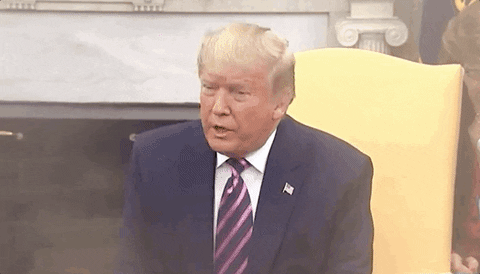The most interesting man in the world... or a spy disguised as a playboy?
Ernest Hemingway. Author. Fisherman. Drunk. 4-Time Husband. And... Spy?
You might know of him through works such as The Sun Also Rises, For Whom the Bell Tolls, or The Old Man and the Sea. But you might not have known that there were missions behind his adventures.
Ernest Hemingway was a spy, and a very popular one.
Official Name
It’s impossible to summarize Hemingway’s intrigues in a single name. But it may be interesting to note that the Soviet code name for him was “Argo.”[Reynolds, Writer, Sailor, Soldier, Spy.]
Before we start, we want the people to know what’s really going on! Please share the newsletter with others. There’s a lot of research and effort that goes into each article!
Conspiracy Description
In Writer, Sailor, Soldier, Spy, Nicholas Reynolds takes a closer look at the life of famous American writer Ernest Hemingway. He reveals that when Hemingway wasn’t busy writing, he got involved in all kinds of adventures on behalf of the United States government – and possibly had some connections outside of the US government as well.
The Details
The story begins with the Spanish Civil War, a military revolt against Spain’s Republican government. Hemingway mostly stayed out of politics until he covered this conflict for the American Newspaper Alliance. Soon he was a passionate supporter of the anti-fascists and helped republican guerillas fight these nationalists. These experiences inspired parts of his famous work For Whom the Bell Tolls and may have permanently changed his attitude toward politics.
Soon afterward, Hemingway found that as a well-connected individual he could be useful to the United States government… and possibly other political leaders as well. In the early 1940s, the Roosevelt administration discovered Hemingway would be traveling to China and asked for his help. They wanted him to study the political situation in China and bring back any information that might be useful. It wasn’t exactly spying, but was a fact-finding mission for the government. While in China Hemingway and his wife, Martha Gellhorn, met with Chou En-lai, the communist leader who would eventually become Premier, and also with Chiang Kai-shek, Chinese Nationalist and at the time the leader of the Republic of China.
After returning home, Hemingway had a meeting and wrote a follow up letter about what he had learned. According to Reynolds, “both the communists and the Nationalists used him to deliver their messages to the American public and the American government, while the secretary of the Treasury got a personal briefing from an experienced traveler fresh from China.”
Around this time Hemingway also caught the eye of the Soviets, including the NKVD. The NKVD, precursor to the KGB, included the Soviet secret police. Before the trip to China, a man named Jacob Golos met with Hemingway and the writer agreed in some fashion to have a secret relationship with the Soviets. Hemingway even gave Golos a few stamps that could be produced by NKVD representatives who needed to gain Hemingway’s trust.
Reynolds’ book points out that Hemingway was primed in some ways to become a spy. He was interested in intelligence work, frustrated with the United States government, and looking for ways to contribute to the global fight against fascism. But Reynolds also explains that Hemingway would not have seen his arrangement with the NKVD as a betrayal of the United States. Because he was not a government official and the United States was not at war with the Soviet Union, it was also not as legally problematic as one might expect, based on the laws of the time! Hemingway’s main legal concern would have been the 1938 Foreign Agents Registration Act.
The meeting did not immediately result in any elaborate spy missions. But Hemingway kept busy as his thirst for excitement led him into unusual roles assisting the United States. Hemingway moved to Cuba in the early 1940s and in 1942 the writer approached Robert Joyce at the Havana Embassy with an unusual idea: an amateur counterintelligence bureau in Havana.
Known as “the Crook Factory,” Hemingway’s enterprise saw him using an assortment of locals to gather information. This Crook Factory even had a book written about it. He would meet with them in his home, discuss the findings over drinks, then carefully produce reports for the embassy. The FBI did not care much for Hemingway’s information. After all, he was not unearthing spies or dramatically altering events in Cuba. But the embassy claimed to find the information useful.
Hemingway soon tired of the Crook Factory and replaced it with an even more exhilarating project. With reluctant approval from authorities, he used his boat, Pilar, to patrol for U-boats, which he planned to sink. Known as “Operation Friendless,” this endeavor found Hemingway and his crew cruising for hours, even days, pretending to fish while looking for enemy submarines. Although he spotted one in December 1942, he never got close enough to begin an attack.
But that’s not all. The war still raged and Hemingway was working as a war correspondent in Europe when he took over an unofficial intelligence operation. He and a band of Frenchmen set up an unofficial headquarters in a countryside hotel near Paris. Working with intelligence couriers, refugees, and deserters, he gathered information and sent reports to Allied intelligence officers. Hemingway’s intelligence contributed to the liberation of Paris, but he was later forced to defend himself under oath for violating the U.S. Army’s regulations on war correspondents.
Even after World War 2 ended, Hemingway’s activity never slowed down. He materially supported Cuban revolutionaries and vocally supported Fidel Castro. Even when the relationship between the U.S. and Cuba went downhill, Hemingway made positive statements about the Cuban revolution and hoped things would move in a better direction. It was only very reluctantly that Hemingway left Cuba in 1960.
But what about Hemingway’s work with the NKVD back in the early 1940s? After the initial recruitment in New York, there were more meetings but it seems like they never amounted to much. Somebody in Moscow wanted to get in touch with Hemingway in 1948 and 1950, but they were not successful, and Hemingway would have carefully avoided such contact at that point. After 1950, Soviet spies decided Hemingway was no longer on their side and no more efforts were made to contact him.
Unfortunately though, this story doesn’t have a happy ending. Hemingway was surveilled by the FBI under the order of Edgar Hoover up until and after his death. In his last couple years, he was being treated for “high blood pressure and depression” at the Mayo Clinic (as was also reported in FBI documents). This treatment included electroconvulsive therapy, which is a psychiatric treatment that electrically induces a generalized seizure. The infamous Montreal experiments funded by the CIA under MKUltra helped standardized this type of treatment. These therapies apparently left Hemingway in psychological ruins. He was never the same.
The doctor who treated him was Dr. Howard Rome, who also later performed a psychological autopsy of Lee Harvey Oswald. The only other documentation I can find is that Dr. Howard P. Rome also appears in a US Naval Medical Bulletin, writing about The Role of Sedation in Military Medicine. While there isn’t any evidence of it; this sounds like a perfect candidate for running CIA psychiatry experiments during the MK-ULTRA periods.
Hemingway eventually ended up allegedly committing suicide in 1961, but there was no official decision on his death’s cause. There was also no coroner’s inquest and no autopsy.
What This Means
Hemingway wasn’t the only public figure who played a role in intelligence activities. Many countries have utilized celebrities to do their dirty work. Some figures include Julia Child, Roald Dahl, Ian Fleming, and Harry Houdini. How many informants are there within our current public eye?
The 1950s saw the rise of McCarthyism, when many were terrified by potential accusations of communism. Even though his intentions were probably pure with the NKVD, Hemingway probably worried that a defector might give his name to the FBI or HUAC (House Un-American Activities Committee) and he would find himself in hot water. He even expressed concerns about being a target of the anticommunist movement in letters to his close friends, although he never admitted to being a spy.
There’s a decent chance that the paranoia and anxiety Hemingway faced was driven primarily by his past associations with Castro and the NKVD. This guided him into the Mayo Clinic treatment and resulting psychological issues from ECT.
Other Crazy Stuff
His wife Mary Hemingway wrote in her book How It Was that the day before Ernest’s suicide, they were dining in a restaurant in their small hometown in Idaho. There were two men there that Ernest didn’t recognize and he asked the waitress who they were. Apparently they said they were traveling salesmen. The issue was that it was a Saturday (and most people didn’t travel weekends for work in that era). Ernest Hemingway believes they were FBI agents. The next day he allegedly shot himself.
Mary gave a statement through a friend, the day after the police closed their investigation of Ernest Hemingway’s death. She said she was sleeping and awoke to a couple of banging sounds (which is interesting description for a double-barreled shotgun discharge). She also believed it was an accident while he was cleaning his gun. The only funny thing is, there were no firearm cleaning supplies found at the scene, and no coroner’s inquest or autopsy.
Links below to some wild stuff we came across while writing this article.
The FBIs 122 released pages about Ernest Hemingway, turns out Hemingway was very right to be paranoid - https://vault.fbi.gov/ernest-miller-hemingway/ernest-hemingway-part-01-of-01/view
Justice Thurgood Marshall had a secret relationship with the FBI - https://www.history.com/news/thurgood-marshall-had-a-secret-relationship-with-the-fbi
The FBI really keeps track of many high profile people - https://vault.fbi.gov/popular-culture
Thanks for reading TRUE CONSPIRACIES! Subscribe for more mind-blowing conspiracies every Wednesday.











